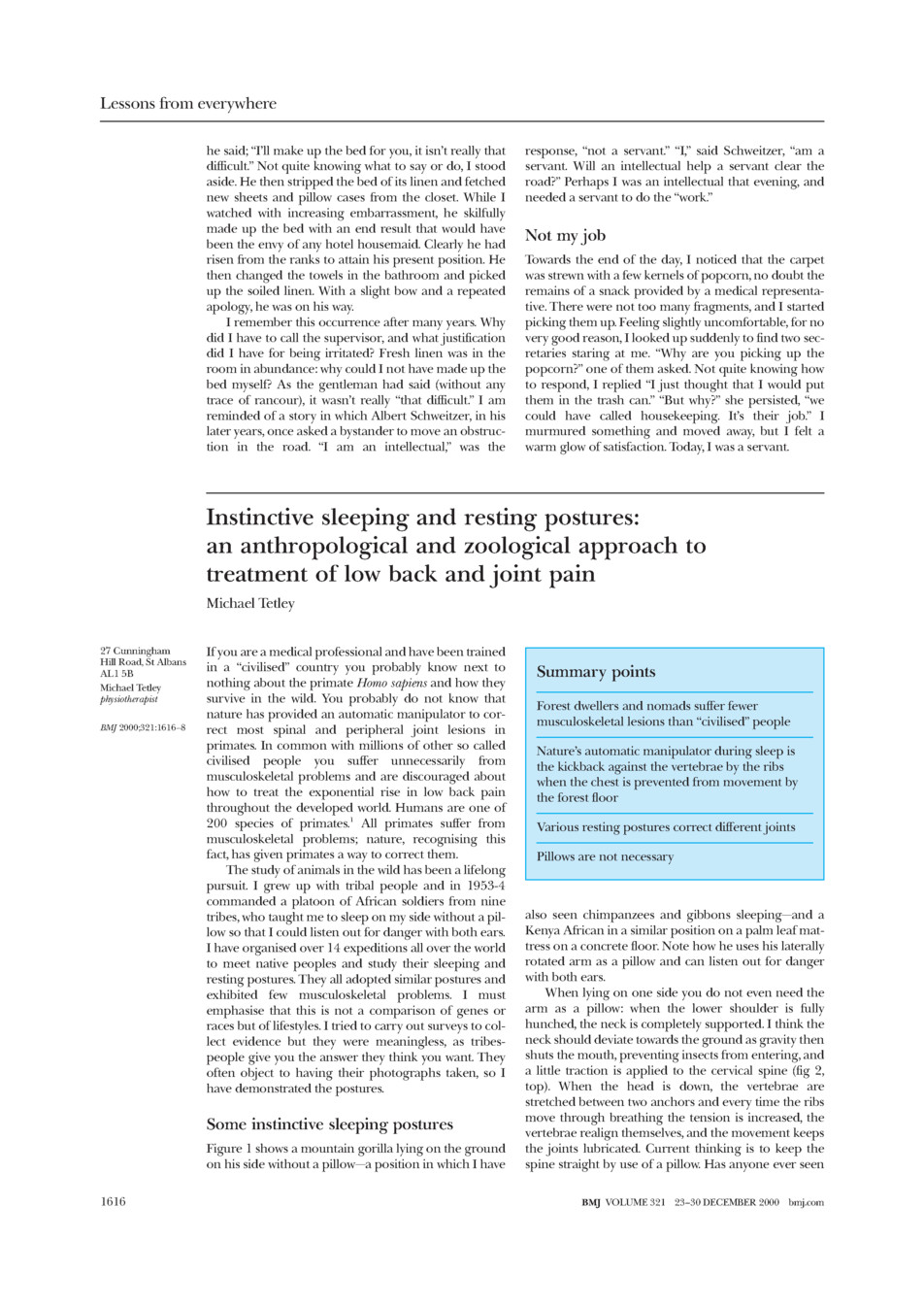Michael Tetley - Instinctive sleeping and resting postures_ an anthropological and zoological approach to treatment of low back and joint pain
Michael Tetley - Instinctive sleeping and resting postures_ an anthropological and zoological approach to treatment of low back and joint pain
Instinctive sleeping and resting postures: an anthropological and zoological approach to treatment of low back and joint pain
Lessons from everywhere
Reflecting on personal experiences where societal norms clashed with natural instincts, the author explores the concept of adopting natural sleeping and resting postures to alleviate musculoskeletal issues prevalent in modern society. Drawing from anthropological and zoological studies, the author emphasizes the importance of observing primal behaviors to address contemporary health concerns (p.1).
Anthropological Insights
Humans, as one of 200 primate species, share common musculoskeletal challenges with other primates. The author's extensive fieldwork among tribal communities highlights the prevalence of instinctive postures that minimize such issues. By studying and emulating these natural positions, individuals can potentially alleviate joint and back pain (p.2).
Key Postures and Observations
Through observations of various sleeping postures among primates and tribal communities, the author identifies key practices that promote musculoskeletal health. From side-lying positions without pillows to full squats with heels on the ground, these postures align the body in ways that support spinal and joint alignment naturally. Such positions not only prevent pain but also facilitate optimal body function (p.3).

